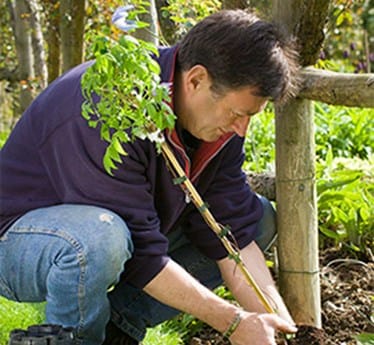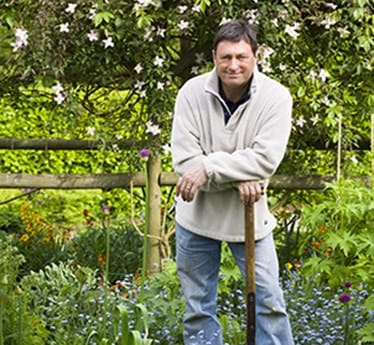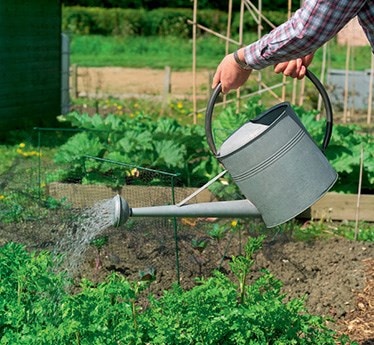Using autumn leaves to improve soil
It never ceases to amaze me how much rubbish my garden generates. At this time of year my plot goes into overdrive with barrow-loads piling up at every corner - and that’s even before I start my autumnal clearing of herbaceous borders or crops from the veg patch.
Then there’s the annual clear-out of my shed and greenhouse that generates all sorts of waste materials, not to mention winter prunings and nature’s autumn bounty, as nearby trees shed their leaves.
So what can you do with it all? Traditionally, a lot of garden waste was disposed of by setting it alight – smoking out the neighbourhood with piles of smouldering leaves and prunings. But in these more eco-aware days, we have to be more creative.
It never ceases to amaze me how much rubbish my garden generates. At this time of year my plot goes into overdrive with barrow-loads piling up at every corner
Ways to get rid of waste
- Composting
- Shredding
- Making leafmould
- Burying
- Recycling
- Placing in the dustbin
- Local authority tip
Green waste and fallen leaves
Most plant waste can be recycled on site, creating useful soil improver, as well as, reducing your carbon footprint. Green waste, such as lawn clippings and the remains of bedding displays, can be mixed with fibrous material, such as prunings and woody stalks from herbaceous borders and placed on the compost heap.
To speed composting further, make sure all woody stems and twiggy prunings are cut into small pieces or finely chopped using a garden shredder, before consigning them to the heap. Avoid adding flowering weeds, perennial weed roots or diseased plants because they are unlikely to be killed by the composting process and you’ll end up spreading troubles with your garden compost next year. Instead, bag them up separately and place in the dustbin or green waste bin.
Autumn leaves can be added to the compost heap, too, but if your garden generates a lot, you might be better off composting them separately in a leafmould enclosure green waste can also be disposed of in the ground. Digging in the fresh remains of bedding plants and other soft green waste is a bit like digging in green manure. You can use this method when preparing your runner bean trenches, but it will work equally well for other hungry crops, such as marrows and tomatoes.
Most plant waste can be recycled on site, creating useful soil improver, as well as, reducing your carbon footprint
Woody prunings
If you have too many woody prunings to compost, you can turn them into a useful mulch by simply shedding them. Use the resultant material like bark chippings around well-established shrubs and trees.
Before I start shredding, I bundle up the best twiggy bits and save them to use as natural plant supports for peas and herbaceous plants next year. Burning is another useful way of getting rid of woody waste, but it is not allowed in all areas – so check before you light-up. Use an incinerator rather than making a bonfire because it will burn more efficiently and prevent the fire getting out of control. Make sure the material is thoroughly dried out before placing into the incinerator, so that it burns quickly without producing a lot of smoke.
Do not add plastics or other waste to the fire, since these will produce harmful noxious fumes and may burn erratically. Warn your neighbours before lighting-up, so that they can shut any open windows and take in the washing – better still get together with your neighbours to have one burning session for the entire area. Being rich in potash, you can recycle the ash from your incinerator – bagging it up dry and scattering it around fruit trees and flowers in the spring. If you have trouble getting rid of the organic waste in your garden, check your local authority to find out what recycling services they offer.
Dealing with other waste
My garden generates a lot of other waste that cannot be composted, shredded or burnt – but it can still be recycled. Pots and other plastic items can be reused time and time again, provided they are properly cleaned between uses.
Old compost bags are even more useful, I recycle mine as rubbish sacks and for wrapping rootballs when moving or dividing plants. But when stuff wears out and is beyond repair, there’s nothing for it but to take it to the local recycling centre. Some councils will even come and pick up large items (for a fee), so you don’t have to ruin the boot of your car taking it to the tip.
A few items have to be disposed of in specific ways. Garden chemicals are a case in point. If bought recently, follow the disposal instructions on the packaging, but if the product has since been banned, is very old or has lost its label, seal the packaging carefully and contact your local authority to find out your nearest disposal site.












